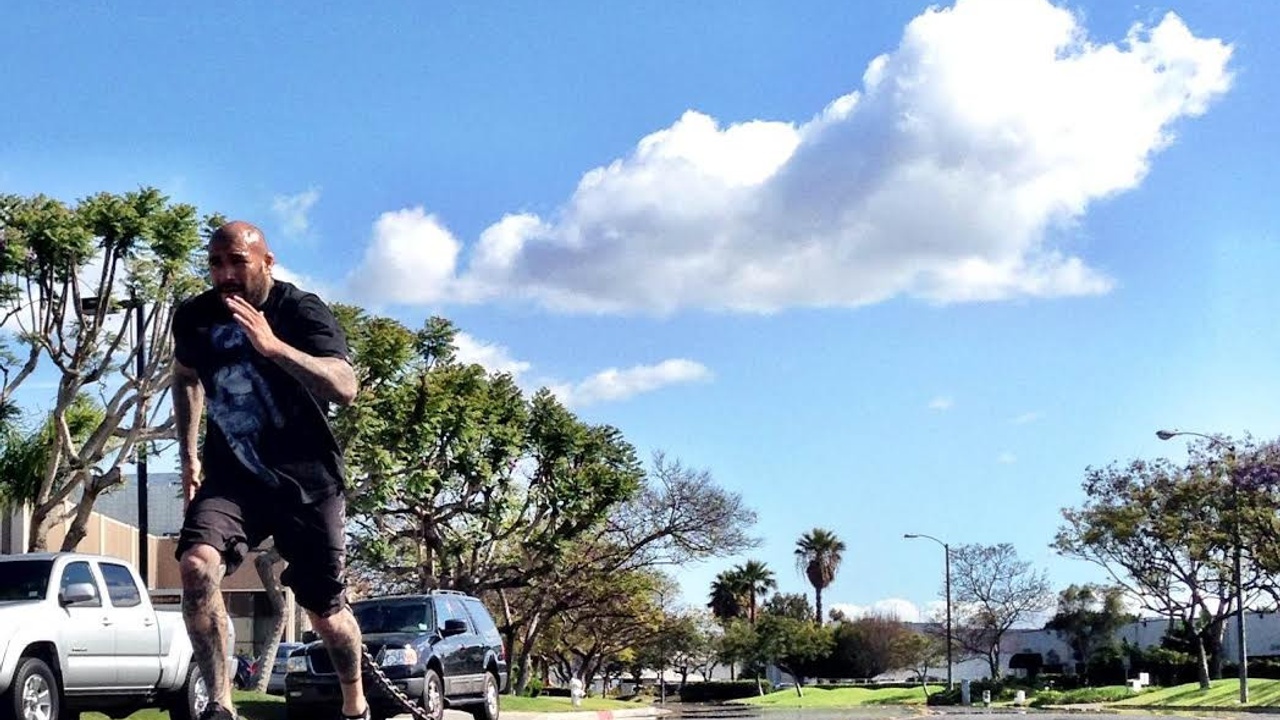
10 Chain Exercises Guaranteed to Develop Massive Strength and Endurance
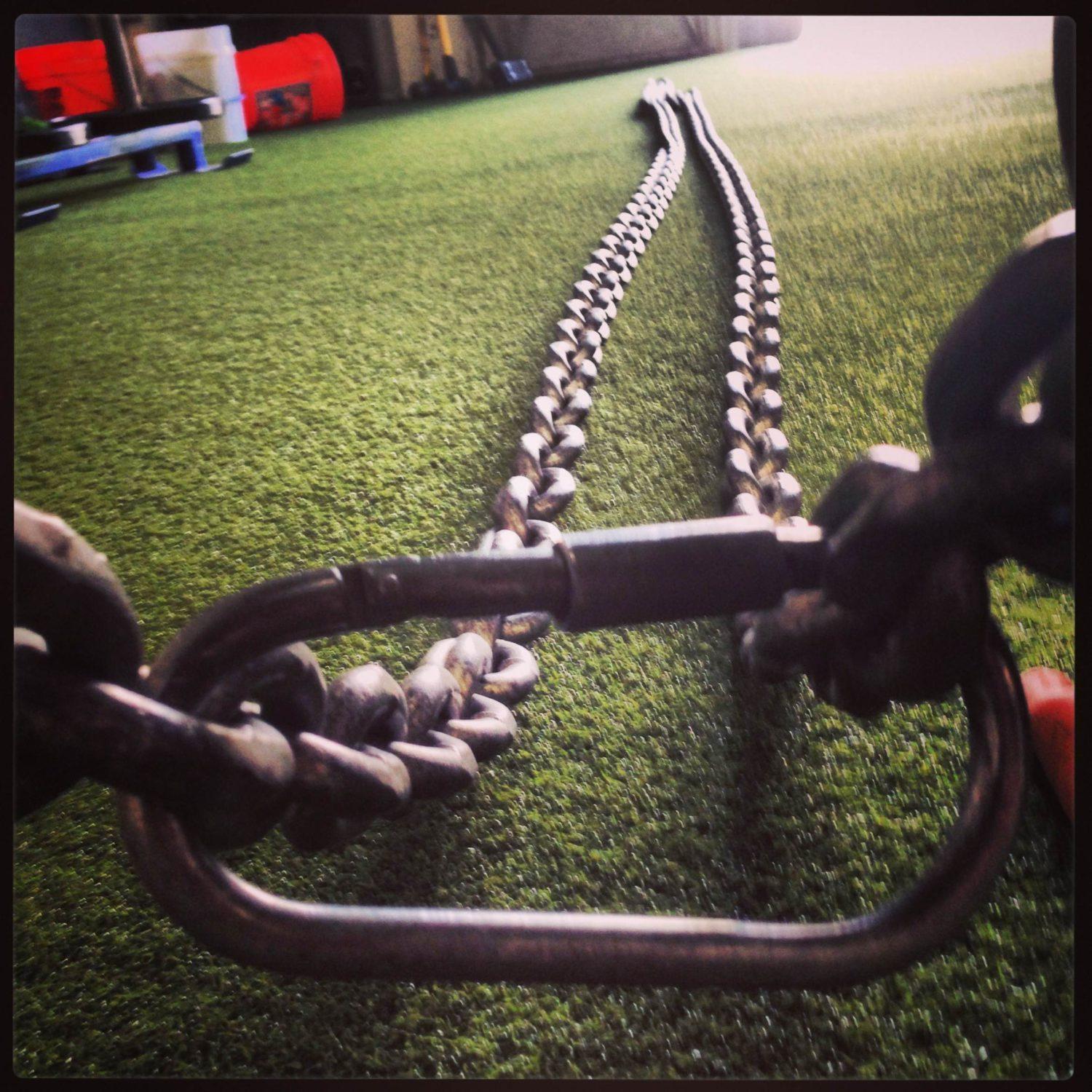
by Corey Beasley
Over the past 16 years of coaching and training, I have found that the most simple workouts tend to be the best. You don't get bogged down by the details or wrapped up learning technique. All you have to do is work. Here are a handful of exercises that are simple, easy to manage and brutally effective for developing real world strength. Developed by John Brookfield, these drills have become a staple for our combat athletes.
Equipment needed: 35ft, 1/2", 100lb chain, although a sled or implement could be substituted in most cases.
1. Never Ending Chain Pull
This exercise uses one, closed loop chain, wrapped around a heavy bucket or secure post. This can be done from a bilateral, staggered, kneeling, half kneeling, seated or push up positions. Keep the body straight, tall spine and pull either for time or distance. You can use the caribbeaner or odd link to keep track of distance. Here is a quick video with Ingrid Marcum, National Olympic lifting champion and member of the Olympic Bobsled team:
2. Chain Drag
This one is pretty straight forward and great for increasing your work capacity. Use a harness, attach the chain and walk. At our gym, we have the athletes simply walk around the block, which is almost exactly 1/2 mile. Depending on your weight, strength and conditioning, 1 chain could be very difficult or easy, so adjust the weights accordingly.
A few ways to adjust the intensity for this drill include: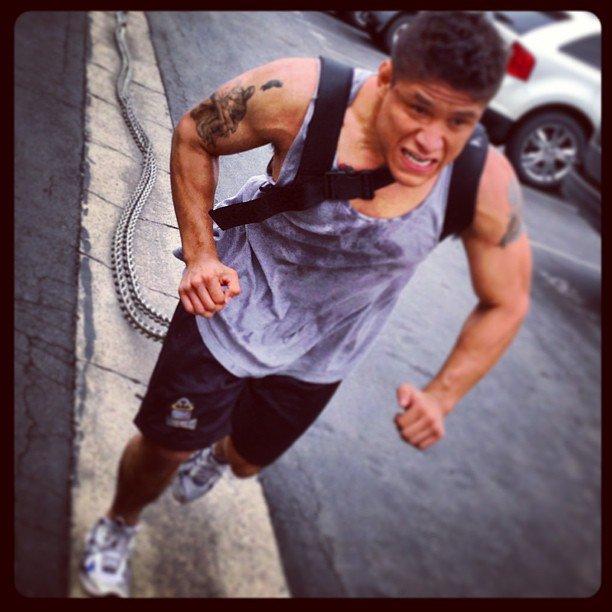
- The longer the chain, the more friction it creates and the more resistance you will have during the pull. If you attach both ends of the chain to the harness vs one.
- Partner relays are good to build up a tolerance for this drill. You go/I go, or you could use three people if necessary.
- You can always add more chains for increased resistance.
- The surface that you drag on will make a big difference. Dragging on smooth pavement vs rough gravel vs grass.
3. Chain Sprint
This is almost exactly the same as the chain drag, except you are sprinting. I typically use one chain for this drill, attach one end to the harness and keep the sprints to 20-60 yards. I like using the chain versus a sled or tire because it drags much more smooth and allows for better run mechanics.

4. Reverse Chain Drag
Similar to the regular chain drag, except that you are facing the chain and back pedaling or walking backwards. This puts a lot more of the pressure on the fronts of the legs, shins and feet. You can use a harness for this drill, but I have found that using a dip belt is the most comfortable. You can also hold handles or other implements, if your grip can hold up. Just depends on how long you plan on being under tension.
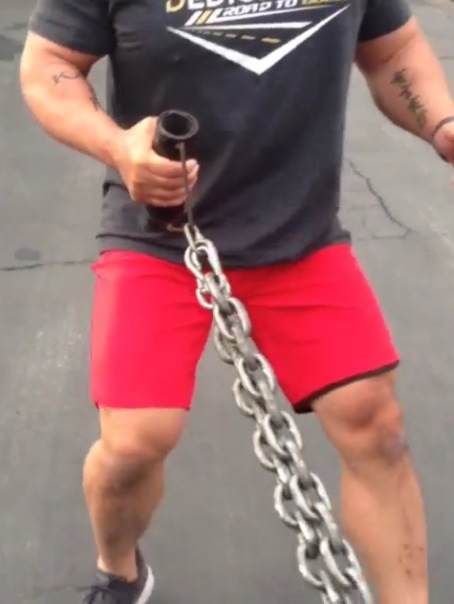 5. Cross Over Step Chain Drag
5. Cross Over Step Chain Drag
Using a dip belt or similar, you will have the chain dragging out to one side. Assume a low athletic stance, with good posture, lean away from the chain a bit and then cross one leg over (think cross over step like a speed skater), drive through the front heel and continue for distance. This is a great drill for developing strength in the hips, glutes and thighs. One chain might be a little light, but you can adjust the tension to match your needs.
6. Chain Crawl
Use a caribbeaner or closed hook to connect the ends of the chain. This creates a closed loop. Pull the chain up around your waste, assume the crawling position and do work. I like this drill because you are forced to keep your knees and hips low. If you raise your hips up to make the movement easier, the chain slides down your legs and you have to stop to adjust. Keeping the knees and hips low forces the legs, core and upper body to sta connected and work as a team. For most people this is a the easiest of the crawl variations, because your legs are the primary driver.
7. Reverse Chain Crawl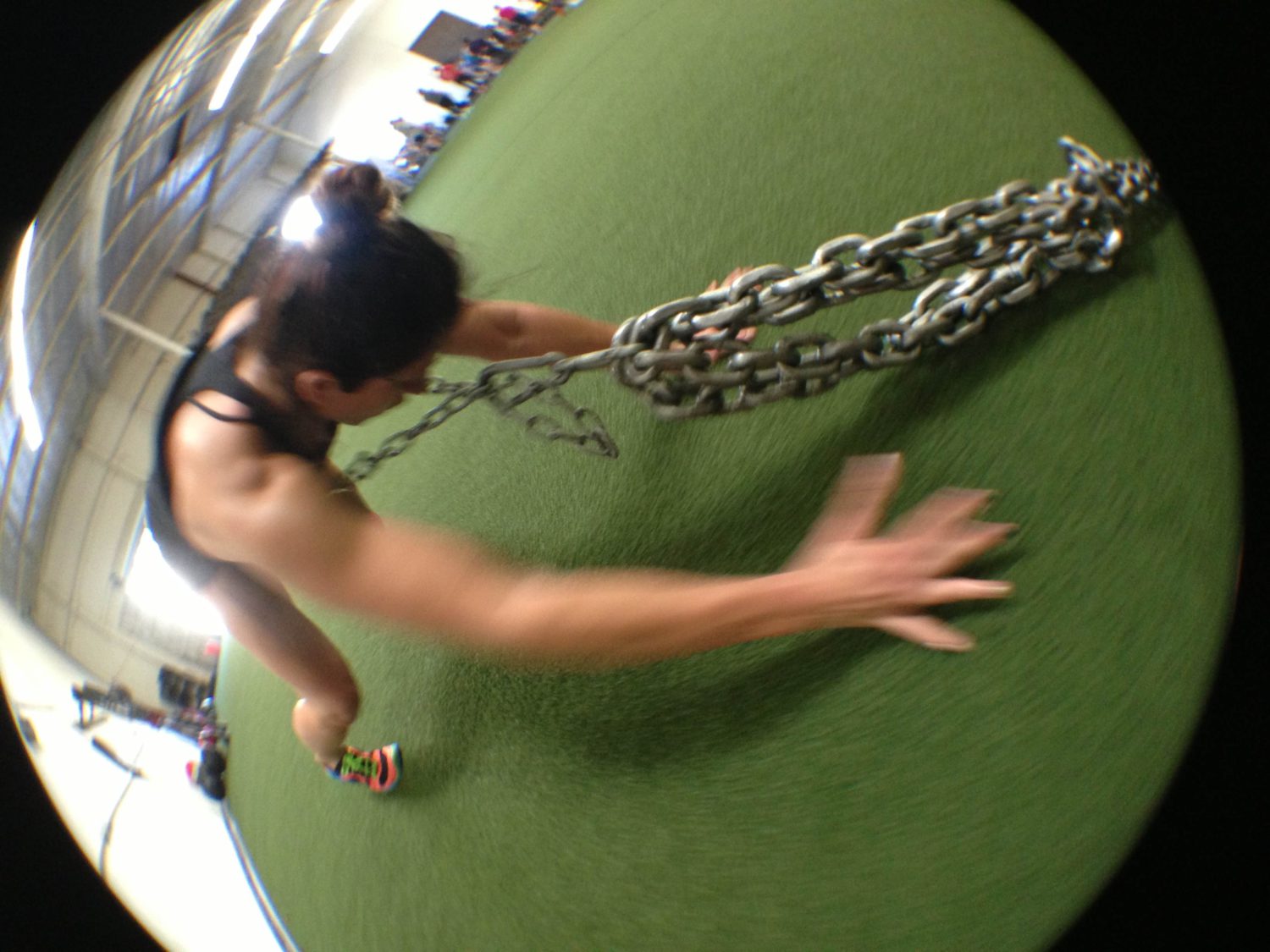
Crawling backwards has become my favorite exercise. Using the same, closed loop chain as above, stand inside the chain, pull it up over your hips and then use another clip to attach the two sides together, about a foot or so in front of you. This will keep the chains from riding up into your armpits during the drill. You can also use a harness or belt, if needed. Although this is a total body exercise, the upper body is forced to become the primary driver when going in reverse. When I first saw this, I thought that my chest, shoulders and triceps would take the brunt of it, but was surprised to feel it mostly in my lats, upper back and core. Anyone that wants to develop more stability and strength throughout their shoulder complex should give this a try.
 7. Crawl Pull Through
7. Crawl Pull Through
This exercise is awesome for developing power throughout the body and is very similar to a one arm snatch or any exercise involving triple extension. Assume the crawling position, with the chain underneath and behind you. Crawl forward until the end of the loop is between your feet. Sit back, with the majority of the weight on your feet, ribs up, stomach tight, grab the chain and then drive through the feet, extending the legs, hips and upper back. This explosive drive should propel the chain forward and you should feel your legs, hips, core and upper back doing most of the work. Keep points are to use the legs/hips, keeping the core engaged, back straight and not to pull too much with the arm or shoulder. Incredible drill to develop power in grappling situations.
8. Rev Crawl and Pull
This exercise is performed while crawling backwards, with the chain out in front of you. As you crawl backwards and the chain gets a couple feet out in front, you simply grab the chain with one arm and pull it back toward you. Think one arm row. As you crawl, simply alternate arms that you pull with, keep the hips still, core tight and enjoy. The combination of crawling and pulling is incredibly taxing on the upper body. Start with short work periods and build up strength and endurance over time.
9. Contralateral Chain Crawl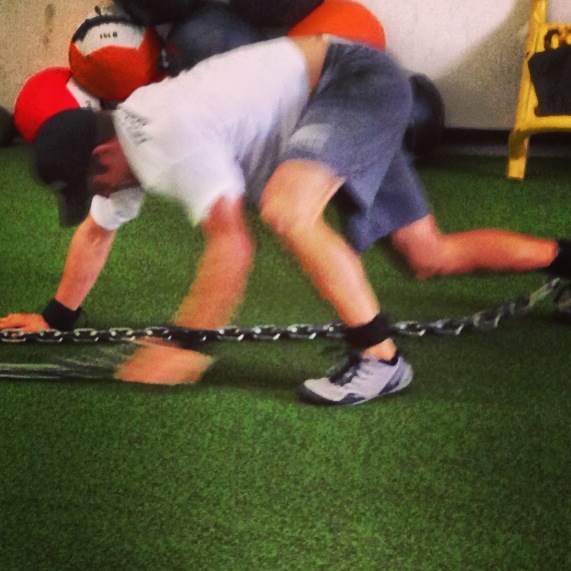
Using ankle straps, attach one end of the chain to your right ankle and the other end to your left wrist. As many of you know, our bodies work contralaterally, meaning the left arm and right leg should work together. When you throw a ball with your right hand, you step with your left foot. By attaching the chain to opposite arm and leg, it forces the two limbs to work together as you crawl. I use this one crawling forwards and backwards and typically lighten the load to keep the technique sharp. One key point is to make sure that the knees stay low to the ground, engage the core, keep the hips still and drive through feet (fwd) and the hand (back).
Here's a quick video with 4 of the drills explained above:
Exercising with chains like this can expose, as well as develop, a lot of the weak links in your body. It is important to start slowly and allow your body to adapt, before increasing the intensity or volume too much. Done correctly, these drills can build massive strength, power and work capacity...meaning you will become a BEAST in the cage or on the mat.
Quick Tip: The surface that you do the drills on can make a huge difference. For example, at our gym we perform some of the exercises on the turf (easier) and others on the rubber floor (harder). Remember that doing the exercises correctly is the first priority, so start slowly, get used to the movements and add intensity once you feel confident in your ability to do the exercise.
If you have any questions about these drills, just leave a comment below and we will do our best to help you out.




